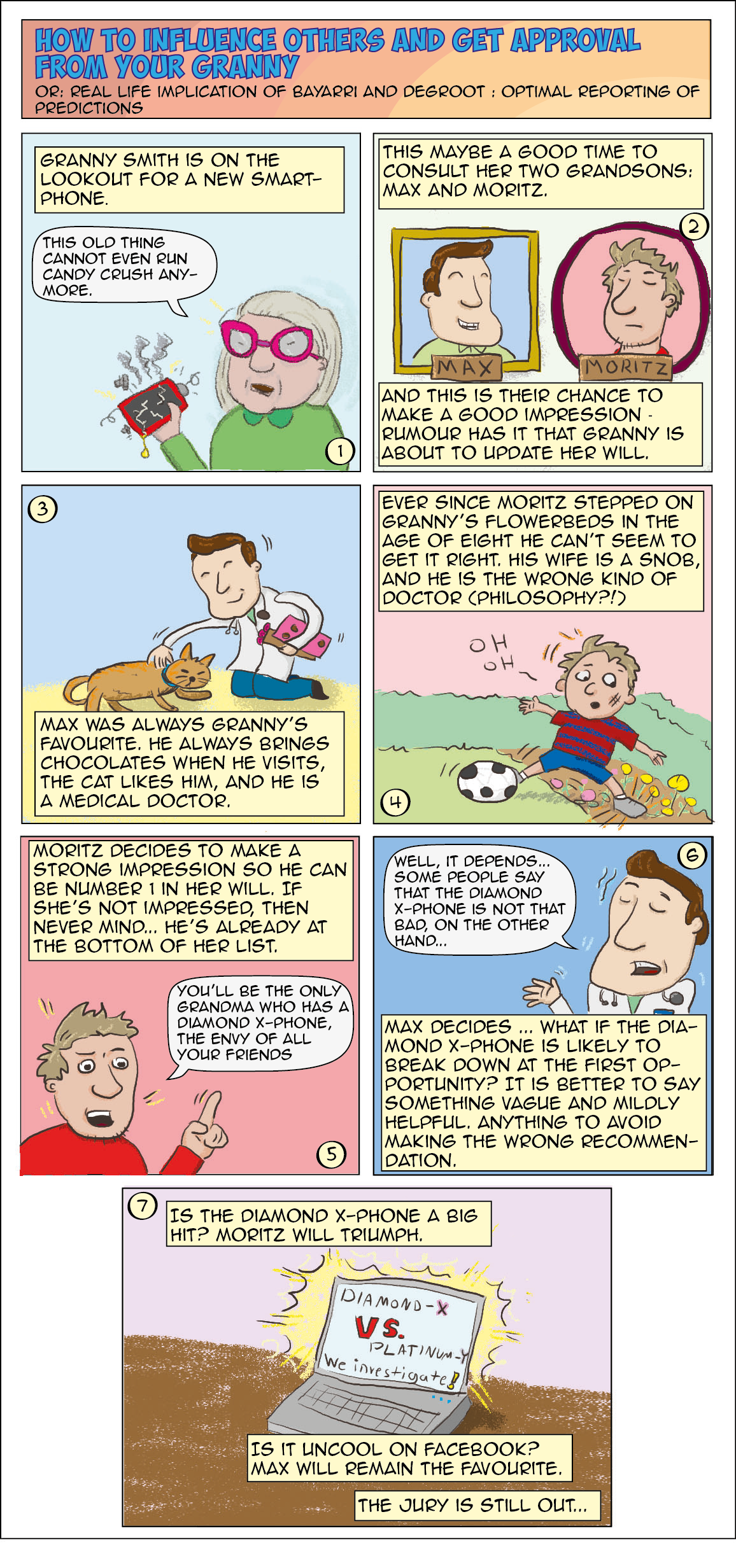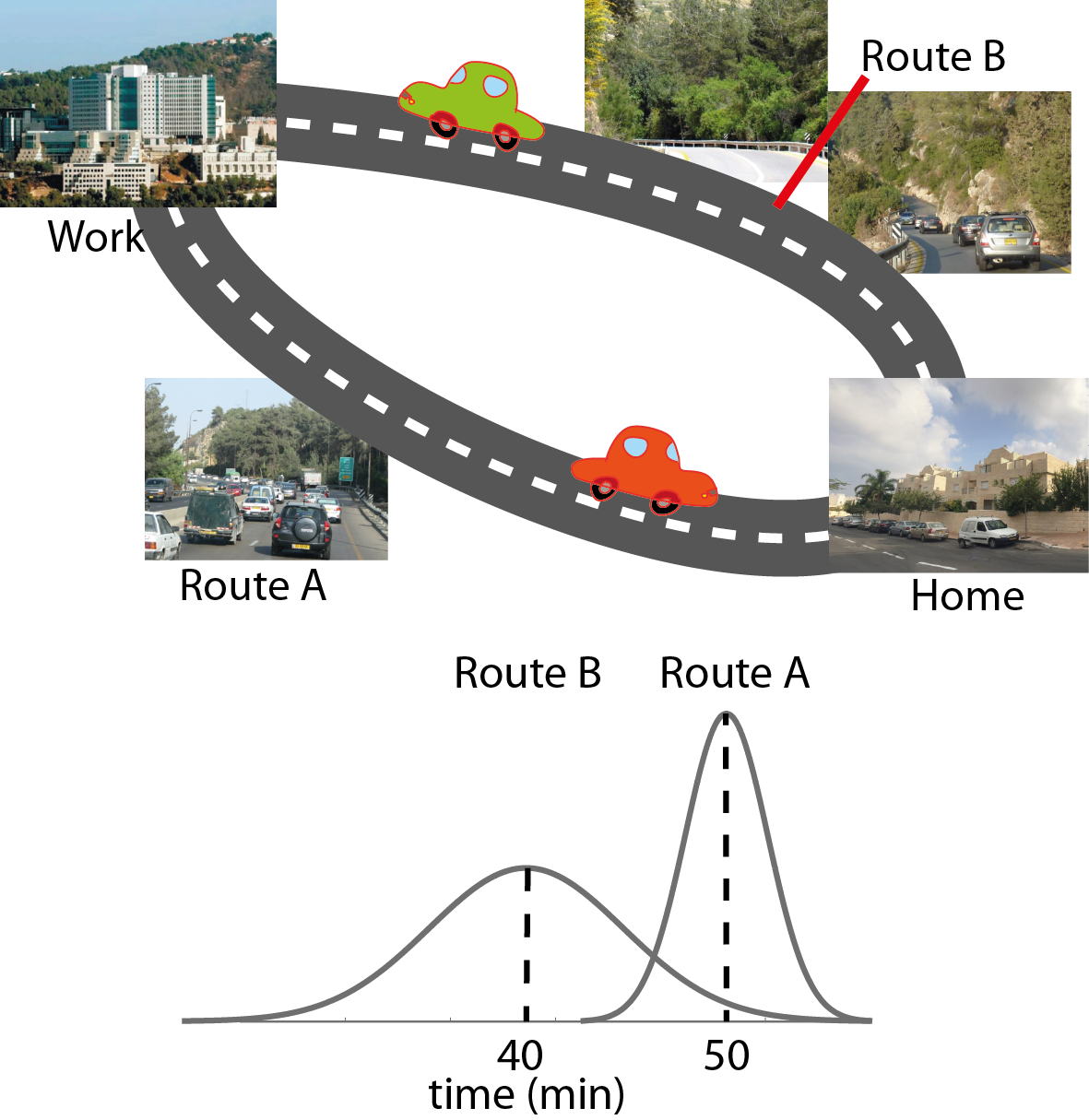Strategic Advice Giving
The exchange, announcement, of private information and opinions, which finally inspire action, is at the heart of human social interaction. Flow of information from the most informed party to the least informed one is not as straightforward as it seems. The transmission of information is strictly linked with reputation, influence, and personal traits and inclinations that could impact it.
In this project I turn the focus to the adviser. From an adviser point of view, influence on the advisee has a fundamental impact on the amount and type of information that will be conveyed (Bayarri and DeGroot, 1989). Here is an illustration of this situation, published also in Uta and Chris Frith's blog.
You can read our paper on advice giving here: Hertz U., Palminteri S., Brunetti S., Olesen C., Frith C. D., Bahrami B.; Neural computations underpinning the strategic management of influence in advice giving; Nature Communications, 2017. [Read]
 To study this process we developed a novel task to evaluate the strategies that an adviser may utilize when transmitting information. On a trial by trial basis the participant has access to a probability of reward being in one of two locations. He is then asked to advise a client about the location of the reward using a confidence scale. The client has another adviser, and after each trial updates the influence weights assigned to each adviser according to the outcome and confidence reports. In the beginning of each trial, the advisor (i.e. participant) is informed if the client has chosen to follow him or his peer. Our behavioural results indicate that in line with computational predictions of Bayarri & Degroot (1989), participants employ a strategy aimed at maximising their influence on the client.
To study this process we developed a novel task to evaluate the strategies that an adviser may utilize when transmitting information. On a trial by trial basis the participant has access to a probability of reward being in one of two locations. He is then asked to advise a client about the location of the reward using a confidence scale. The client has another adviser, and after each trial updates the influence weights assigned to each adviser according to the outcome and confidence reports. In the beginning of each trial, the advisor (i.e. participant) is informed if the client has chosen to follow him or his peer. Our behavioural results indicate that in line with computational predictions of Bayarri & Degroot (1989), participants employ a strategy aimed at maximising their influence on the client.
In this project I turn the focus to the adviser. From an adviser point of view, influence on the advisee has a fundamental impact on the amount and type of information that will be conveyed (Bayarri and DeGroot, 1989). Here is an illustration of this situation, published also in Uta and Chris Frith's blog.
You can read our paper on advice giving here: Hertz U., Palminteri S., Brunetti S., Olesen C., Frith C. D., Bahrami B.; Neural computations underpinning the strategic management of influence in advice giving; Nature Communications, 2017. [Read]
 To study this process we developed a novel task to evaluate the strategies that an adviser may utilize when transmitting information. On a trial by trial basis the participant has access to a probability of reward being in one of two locations. He is then asked to advise a client about the location of the reward using a confidence scale. The client has another adviser, and after each trial updates the influence weights assigned to each adviser according to the outcome and confidence reports. In the beginning of each trial, the advisor (i.e. participant) is informed if the client has chosen to follow him or his peer. Our behavioural results indicate that in line with computational predictions of Bayarri & Degroot (1989), participants employ a strategy aimed at maximising their influence on the client.
To study this process we developed a novel task to evaluate the strategies that an adviser may utilize when transmitting information. On a trial by trial basis the participant has access to a probability of reward being in one of two locations. He is then asked to advise a client about the location of the reward using a confidence scale. The client has another adviser, and after each trial updates the influence weights assigned to each adviser according to the outcome and confidence reports. In the beginning of each trial, the advisor (i.e. participant) is informed if the client has chosen to follow him or his peer. Our behavioural results indicate that in line with computational predictions of Bayarri & Degroot (1989), participants employ a strategy aimed at maximising their influence on the client.

